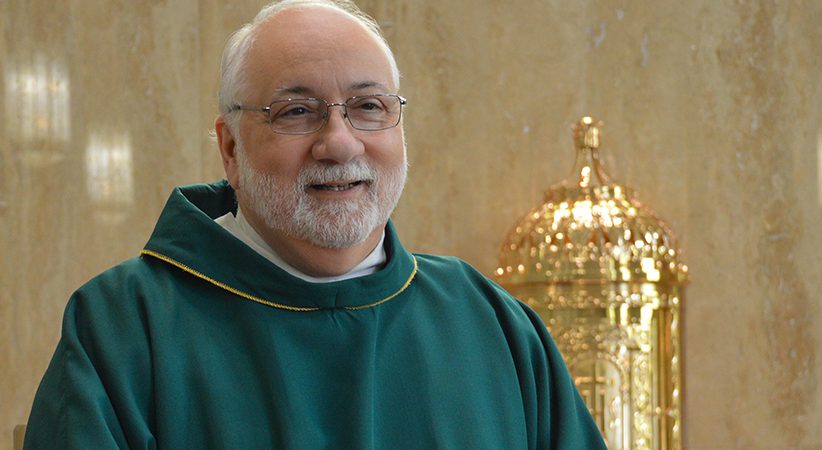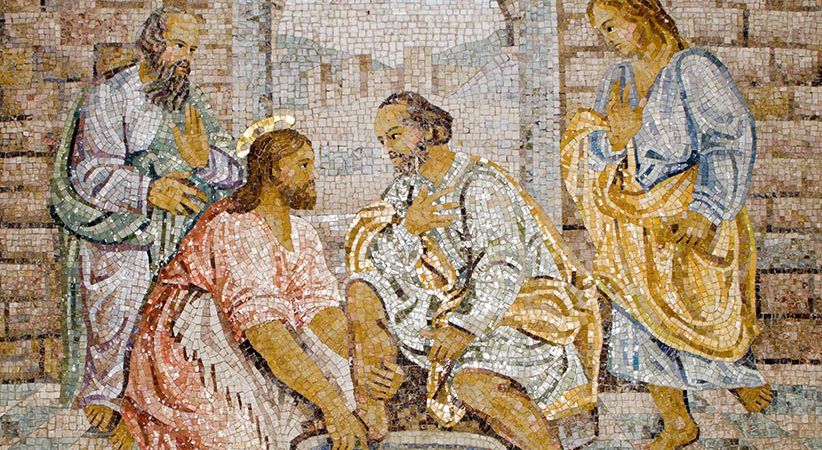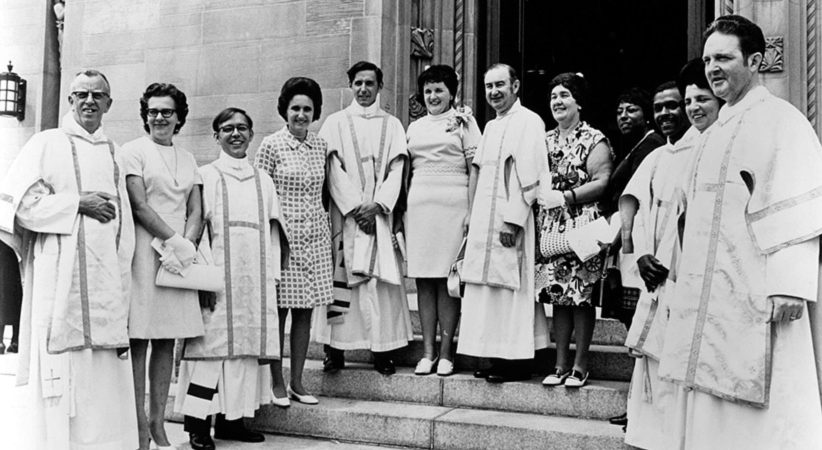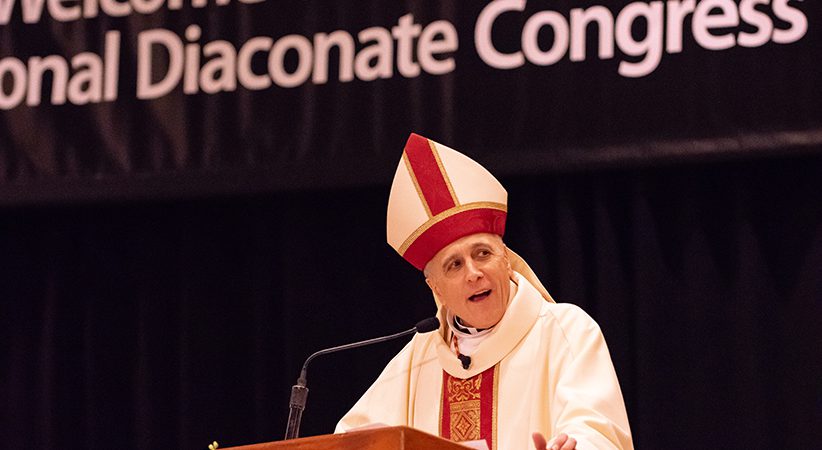The Fundamentals of Better Catholic Preaching
What is the Church’s vision for sermons?
Deacon Peter Lovrick Comments Off on The Fundamentals of Better Catholic Preaching
The Homiletic Directory (2017) articulated a clear vision as to what the Church calls the preacher to do in his preaching and, just as important, what not to do. Preachers naturally look for concrete methods for preparing and delivering homilies as envisioned by the directory. That practical advice is valuable, but at the same time better Catholic preaching is not simply a collection of nuts-and-bolts mechanics.
The directory is careful to point out that “the homily is a dimension of ministry that is especially variable, both because of the cultural differences from one congregation to another, and because of the gifts and limitations of the individual preacher” (No. 3). That is, better Catholic preaching does not mean cookie-cutter preaching. If it did, the directory could just as well issue homilies for every Sunday to be preached everywhere in the world. It has not done that.
While recognizing the variable characteristic of preaching, the Church has clarified fundamental approaches for all its preachers. Specific techniques to improve Catholic preaching make sense only when oriented to these fundamental approaches to the homily.
Primary Apostolate
The first fundamental is to take seriously Pope St. Paul Vl’s 1964 statement: “Preaching is the primary apostolate. Our ministry, Venerable Brethren, is before all else the ministry of the Word” (Ecclesiam Suam, No. 90). He declares that despite all that a priest or a deacon is called to do, it is the primacy of the preaching apostolate that must “give the right orientation to our pastoral activities” (No. 90).
One year later, Presbyterorum Ordinis re-emphasized preaching as primary (cf. No 4). Thus the homily is a calling that demands the preacher’s best. This focus alone, when taken to heart, cannot help but have a major impact on preaching.
Preparation
The second fundamental proceeds from the first — that is, since preaching is a primary apostolate, then preparation deserves extended time. Pope St. John Paul ll reminds preachers in Catechesi Tradendae (1979) that the homily must be carefully prepared (cf. No. 48).
Pope Francis tells us what that means in unvarnished words in Evangelii Gaudium (2013): “Some pastors argue that such preparation is not possible given the vast number of tasks which they must perform; nonetheless, I presume to ask that each week a sufficient portion of personal and community time be dedicated to this task, even if less time has to be given to other important activities” (No. 145).
Preparation time needs to be extended throughout the week rather than crammed one or two days before. An extended process includes praying over the texts of the Mass, consulting both ancient and modern sources, percolation of inspirations, and crafting the best way to communicate to the listeners in front of the preacher.
The Church’s Agenda
The third fundamental follows from St. John the Baptist: “He must increase; I must decrease” (Jn 3:30). That indicates that the preaching agenda is the Church’s, not the preacher’s.
Cardinal Joseph Ratzinger, when diagnosing the crisis of modern preaching, wrote, “Today more than ever before the preacher tends to place himself outside and above the believing Church — hardly ever in the name of his ordination, but all the more in the name of his learning” (“Dogma and Preaching,” Ignatius Press, $29.95).
Whereas it was possible before the Second Vatican Council’s revisioning of the homily for a preacher to determine his own theme based on whatever he wanted to speak about, that is no longer the case. Preachers are called to follow the agenda set by the Church in its selection of Lectionary readings and liturgical texts.
Neither is the preacher commissioned to choose a short passage or line from one of the texts as an excuse to jump off into a preconceived subject. The Homiletic Directory asks preachers to see the Lectionary and liturgical texts as a “constellation” (No. 16) rather than a focus on a single text. Just as one can step back from looking at individual stars in the night sky to see a pattern in a constellation of stars, the directory asks preachers to bring all the texts together so that they are “mutually revelatory” (No. 19).
This approach acts as a corrective to a selective misuse of the readings. The directory notes, “The Mass is not an occasion for the preacher to address some issue completely unrelated to the liturgical celebration and its readings, or to do violence to the texts provided by the Church by twisting them to fit some preconceived idea” (No. 6).
Supplemental to the Mass
The fourth fundamental is to see the homily as an intrinsic part of the liturgy. Michael Fiedrowicz’ “The Traditional Mass” (Angelico Press, $32) notes that formerly after the Gospel, “Where appropriate, a sermon follows, during which the priest sometimes lays aside the chasuble or at least lays the maniple on the missal, as, according to the traditional rubrics, the homily does not intrinsically belong to the rite of the Mass” (Page 90). The homily was not integral to the Mass, but rather supplemental. Sacrosanctum Concilium (Constitution on the Sacred Liturgy) set a new course in 1963, insisting that “the homily, therefore, is to be highly esteemed as part of the liturgy itself” (No. 52).
The Congregation for Divine Worship and the Discipline of the Sacraments underlined the homily as intrinsic to the liturgy by asking preachers to refrain from making the Sign of the Cross when they finish preaching. The congregation states that, because the homily is part of the liturgy, the people have already blessed themselves and received the greeting at the beginning of Mass, and therefore, it is better then, not to have a repetition before or after the homily.
Pope Benedict XVI in Sacramentum Caritatis (2007) quotes the General Instruction of the Roman Missal noting that preaching is “part of the liturgical action” (No. 46).
Pope Francis makes the significance of this change clear. He writes in Evangelii Gaudium that “when preaching takes place within the context of the liturgy, it is part of the offering made to the Father and a mediation of the grace which Christ pours out during the celebration” (No. 138).
Thus the homily, like the other components of the Mass, offers praise and worship to God and conveys grace to the people. It does not stand alone. Collections of homilies in books and YouTube videos of homilies can give that impression. The Church, however, asks for preaching in a particular context to a particular congregation. That preaching grows out of everything that went before it from the entrance antiphon or hymn, through the Confiteor, Kyrie, Gloria and the readings. It does not conclude, but flows into the Creed, the prayers of the faithful, the Eucharist and the closing prayer.
Concreteness
The fifth fundamental is that the homily incorporates the experience, challenges and questions of the particular listeners in front of the preacher. The directory makes the point that homily is not meant to be abstract, but rather concrete.
Cardinal Ratzinger makes this diagnosis of poor preaching: “The crisis in Christian preaching, which we have experienced in growing proportions for a century, is based in no small part on the fact that the Christian answers have ignored man’s questions: They were and remain right, but because they were not developed from and within the question, they remained ineffective” (“Dogma and Preaching,” Page 77)
Pope Francis reiterates that the homily should address the questions from contemporary life (cf. Evangelii Gaudium, No. 154) and that “we should never respond to questions that nobody asks” (No. 155).
Consequently, both Pope Benedict XVl in Verbum Domini (2010) asks preachers to consider the Mass texts in these terms: “What should I say to the community in the light of its concrete situation?” (No. 59). Similarly, Pope Francis asks preachers to discern what the listeners need to hear: “He needs to be able to link the message of a biblical text to a human situation, to an experience which cries out for the light of God’s word” (Evangelii Gaudium, No. 154).
Pope Benedict, in an oft-repeated quote, declares that “the quality of homilies needs to be improved” (Sacramentum Caritatis, No. 46). Pope Francis, with wry humor, remarks that both laity and preachers suffer from Catholic preaching, “the laity from having to listen to them and the clergy from having to preach them!” (Evangelii Gaudium, No. 135).
The Church calls for better Catholic preaching, and to that end has given us a vision of preaching based on fundamental principles.
DEACON PETER LOVRICK holds a doctorate of ministry focusing on homiletics from Aquinas Institute of Theology in St. Louis. He is the professor of homiletics at St. Augustine’s Seminary in Toronto, Canada, as well as the director of diaconate formation.
……………………………………………………………………………………………………………………………………………………..
Pope Francis’ Homiletic Hints
Speaking at his general audience on Feb. 7, 2018, Pope Francis said: “The homilist — the one who preaches, the priest or the deacon or the bishop — must carry out his ministry well, by offering a real service to all those who participate in the Mass, but those who listen to it must also do their part. Firstly by paying proper attention, that is, assuming the right interior disposition, without subjective pretexts, knowing that every preacher has merits and limitations. If at times there is reason for boredom because a homily is long or unfocused or unintelligible, at other times, however, prejudice creates the obstacle. And the homilist must be aware that he is not doing something of his own, but is preaching, giving voice to Jesus; he is preaching the Word of Jesus. And the homily must be prepared well; it must be brief, short! A priest told me that once he had gone to another city where his parents lived, and his father told him: ‘You know, I am pleased, because my friends and I have found a church where they say Mass without a homily!’ And how often do we see that during the homily some fall asleep, others chat or go outside to smoke a cigarette. … For this reason, please, make the homily brief, but prepare it well. And how do we prepare a homily, dear priests, deacons, bishops? How should it be prepared? With prayer, by studying the Word of God and by making a clear and brief summary; it should not last more than 10 minutes, please.”
………………………………………………………………………………………………………………………………………………………





